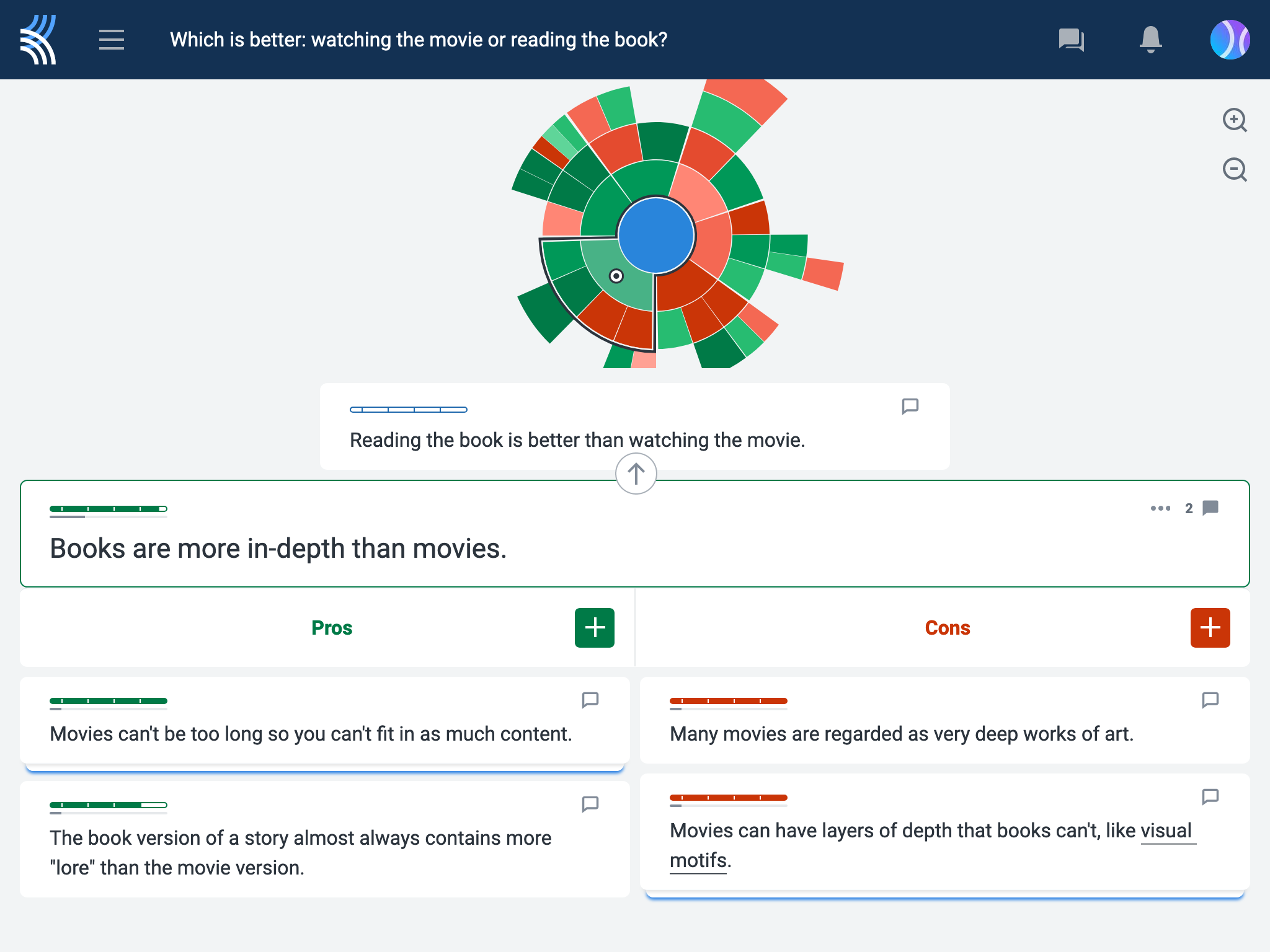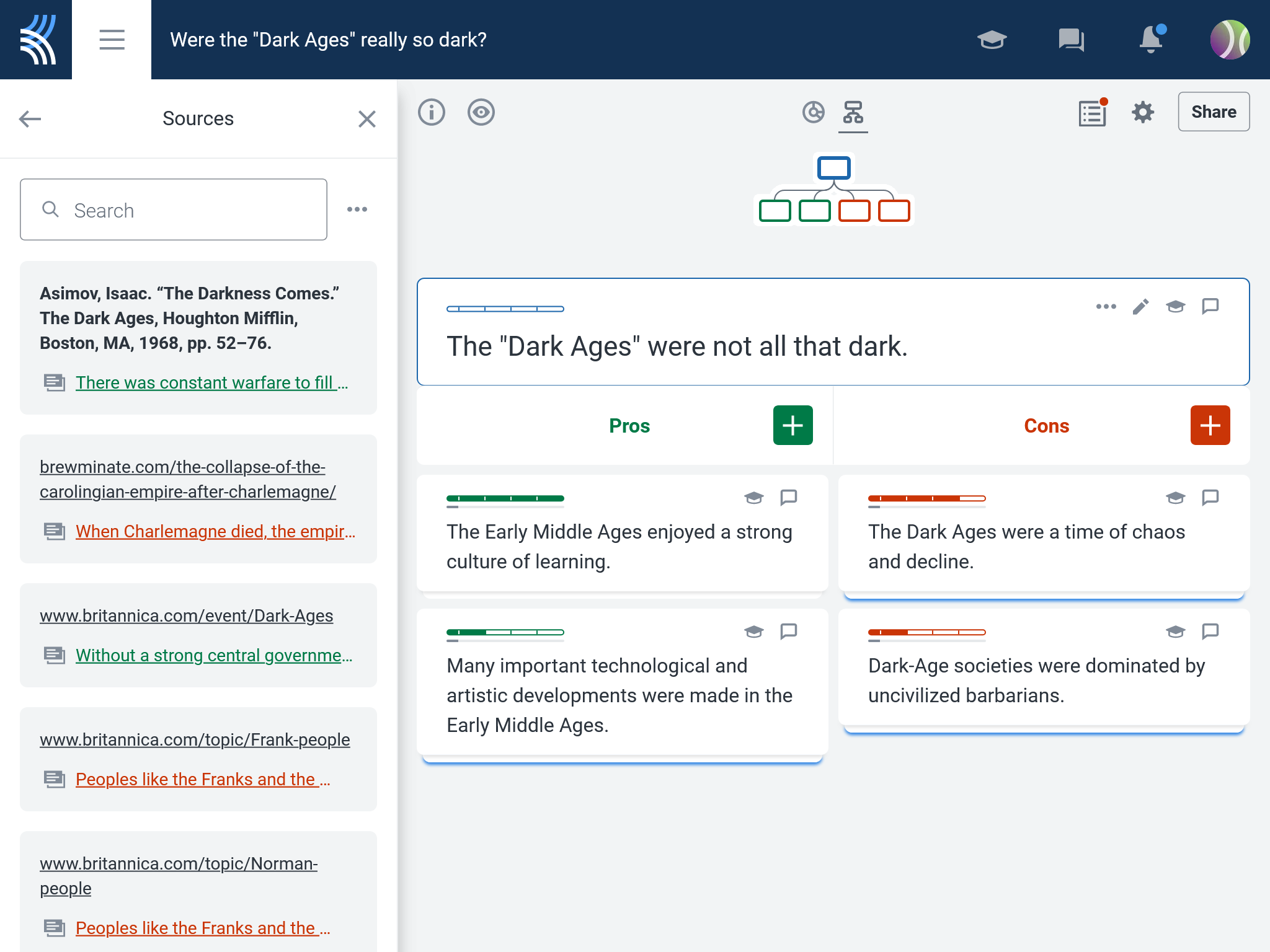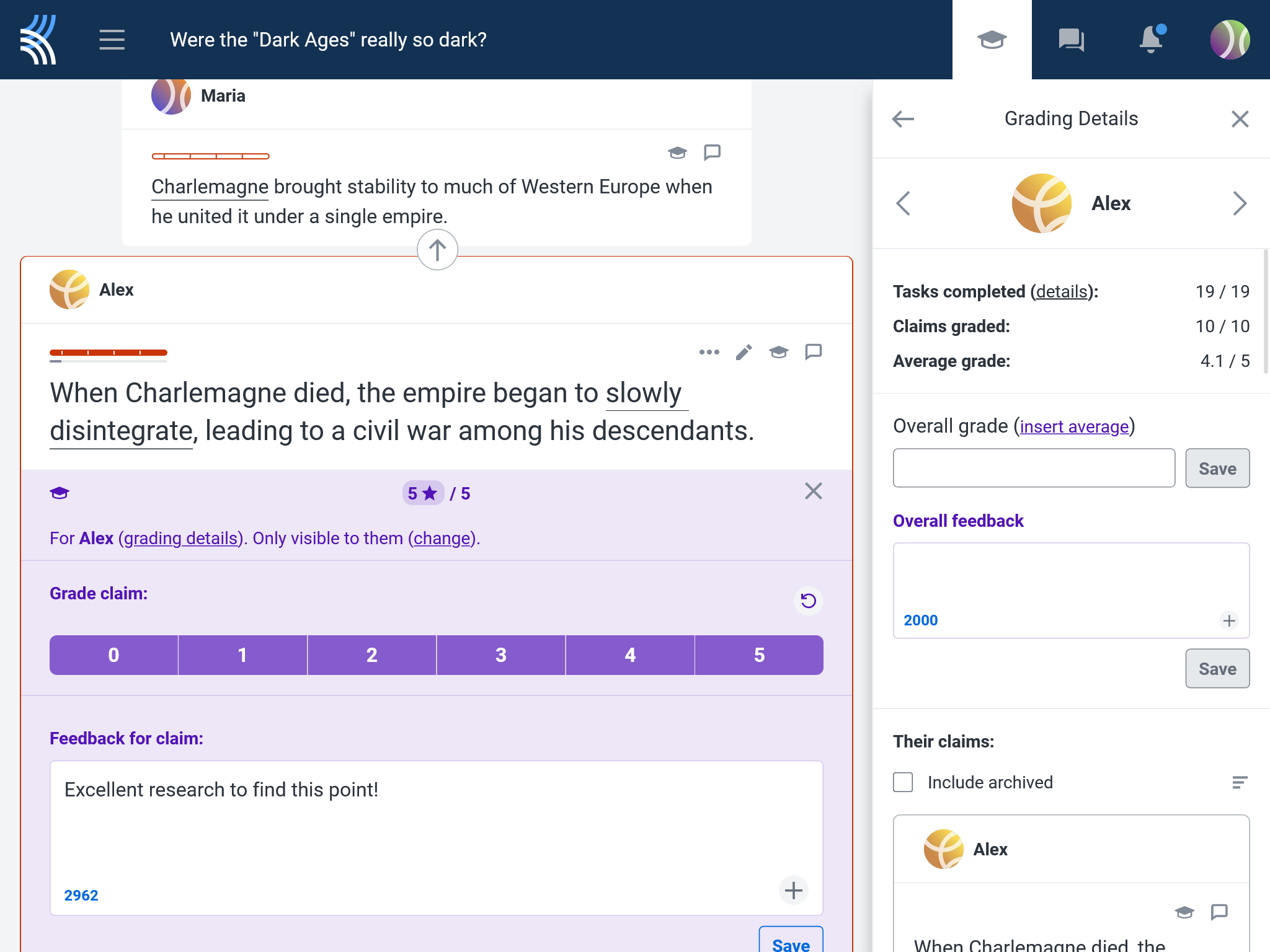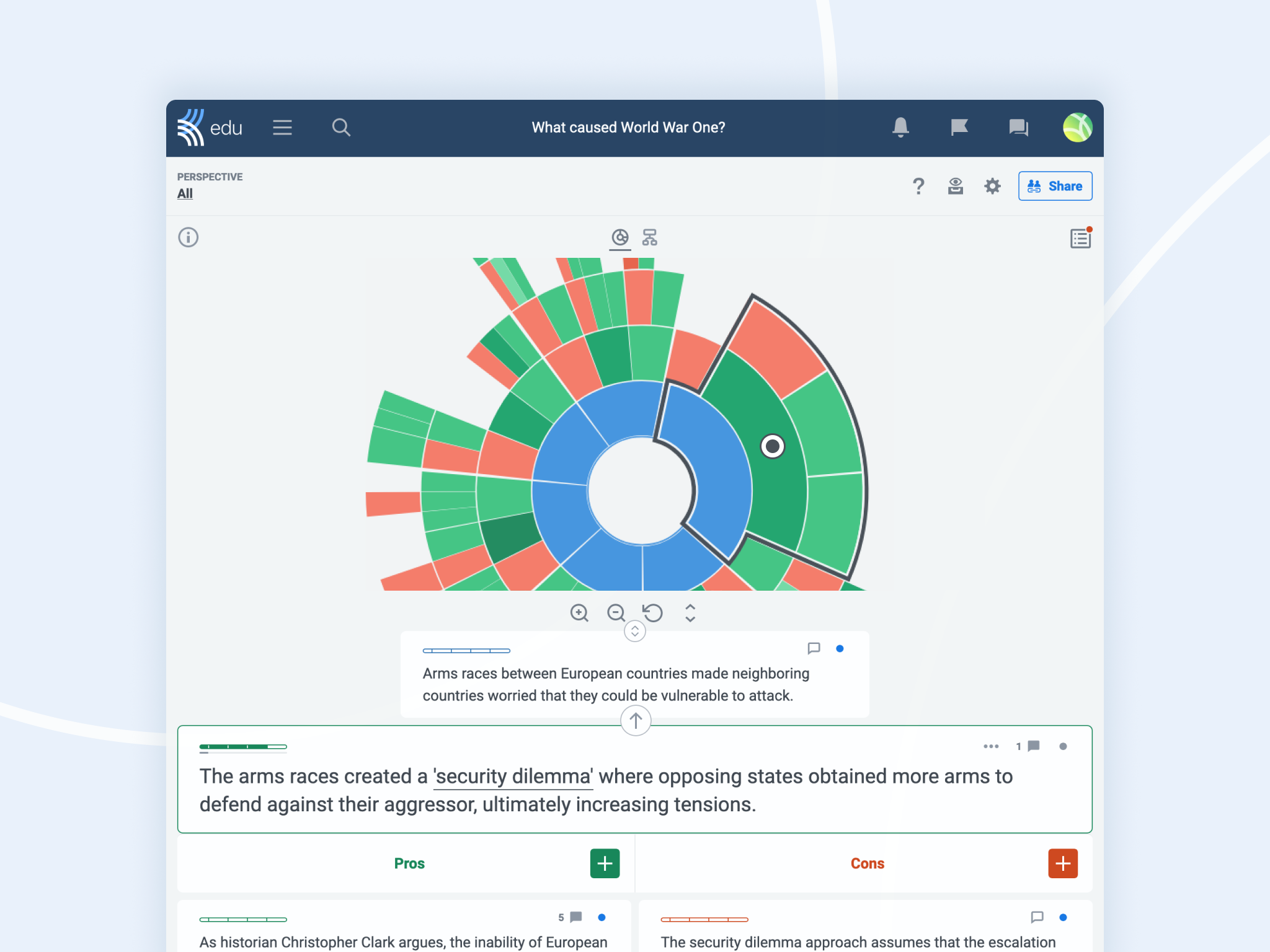At its core, Kialo is a tool for breaking down complex reasoning into manageable chunks. This makes it excellent for enhanced classroom discussions that increase student participation and train vital critical thinking skills.
However, it isn’t just for class discussions: Educators are always finding new and exciting ways to teach using Kialo! Let’s explore some of the popular ways you can use Kialo to enrich your teaching and engage your students.
1. Hold a Kialo discussion with the whole class to increase participation
The most common way teachers use Kialo is to hold whole-class discussions. Unlike traditional oral discussions, Kialo allows every student to contribute simultaneously. Plus, due to the branching nature of Kialo discussions, students can choose to respond to the threads of the argument that they find most interesting. These features combine to boost both participation and engagement!

Because Kialo discussions are text-based, they are also more inclusive of students who might have difficulty speaking up in class. You can further ease common anxieties about participation by making the discussion anonymous to students, with the added ease of teachers still being able to see students’ identities.
Whether your class is conducted in-person, remotely, or as a hybrid of the two, Kialo discussions can help support student learning. In-class activities can be continued asynchronously from home, allowing absent students and those with more to say to keep the conversation going. Plus, every Kialo activity keeps a record of the discussion, which can be referred back to for easy grading or review.
2. Have students plan essays on Kialo to train argumentation skills
Developing long-form writing skills is essential for students, yet it can be challenging to learn. Kialo actively guides students through the crucial — yet often overlooked — planning stage, enhancing their ability to craft well-structured essays.
In a Kialo discussion, students develop points from a central thesis. This closely matches the structure of argumentative essays, with students able to map out their arguments visually before committing them to the page. By seeing their ideas laid out in a clear and logical sequence, students can better understand the relationships between their main points and supporting details, leading to stronger and more cohesive essays.
Kialo’s pro/con format also prompts students to consider counterarguments at every step while planning their essays. This feature is particularly beneficial for developing critical thinking skills, as it encourages students to engage with perspectives they might otherwise ignore.
Additionally, Kialo’s design supports the inclusion of detailed evidence to back up points. Students can add references to their claims using the Sources feature, ensuring their arguments are well-supported and credible.

As a teacher, you can easily provide targeted feedback on their essay outline, ensuring that they’re ready to write before they start.

3. Assign a Kialo discussion to assess topic knowledge
For an innovative approach to assessment, have students develop their own copy of a Kialo discussion on a learning topic, such as religious texts or AI art. This activity asks students to present their understanding of the connective relationships between the information learned, without the constraints of complex essay conventions.
Kialo’s unique sunburst mini-map helps identify knowledge gaps by visually representing different aspects of the discussion. This gives you a handy overview of each student’s knowledge of a topic, making it easy to assess student understanding.

As such, Kialo discussions are easy to grade. With our built-in grading tool, you can cycle through contributions, assign grades, and even export and save a copy of the grades for record keeping. Best of all, using Kialo for assessments can also reduce the risk of AI-assisted cheating, as students must actively engage in structuring their arguments and providing relevant evidence to back up what they say.
4. Share a developed Kialo discussion as an interactive classroom handout

Replace traditional printouts with something more exciting: a dynamic Kialo discussion! Rather than crumpled papers or doodled-on textbooks, students will be more engaged as they explore the topic via an interactive digital resource, leading to higher retention rates of the core information.
You can customize or create your own Kialo discussion, by either starting from scratch or modifying an existing one from our Topic Library. This flexibility allows educators to tailor the content to their specific teaching goals and ensure that all necessary material is covered in an engaging way. Then, share a “read-only” Kialo discussion with the whole class, inviting students to join with the Viewer role.
Alternatively, you can give each student a personal copy of the discussion to annotate and build upon. Plus the Tasks feature makes it easy to assign follow-up activities, such as adding claims, voting, or including sources.
5. Improve formal debating skills with Kialo
Finally, Kialo is an excellent tool to help prepare students for formal debates, whether you’re holding them as an in-class activity or taking part in regional or national competitions!
Kialo’s pro/con format helps students anticipate counterarguments, develop rebuttals, and strengthen their overall argumentation skills. This can enhance their understanding of different perspectives and improve their ability to defend a given position. Additionally, tasking students to add sources ensures that arguments are supported with credible information, helping to develop the research skills essential for successful debaters.
These are just some of the most popular ways that educators are using Kialo with students. If you’re doing something different on Kialo, we’d love to hear about it! Please contact us at feedback@kialo-edu.com or connect with us on social media.

